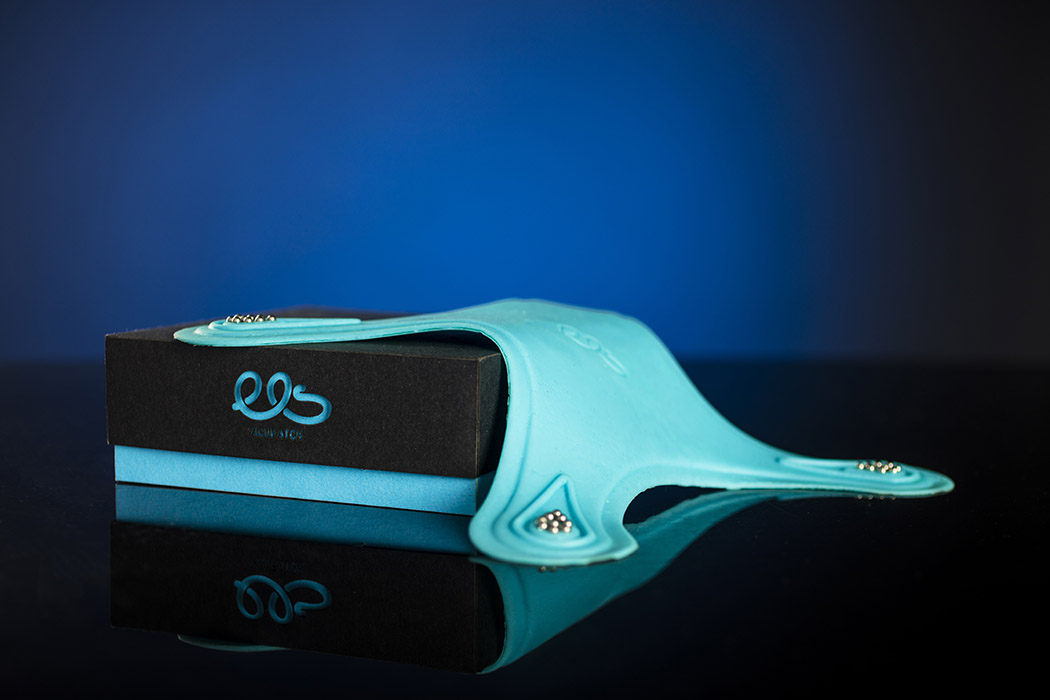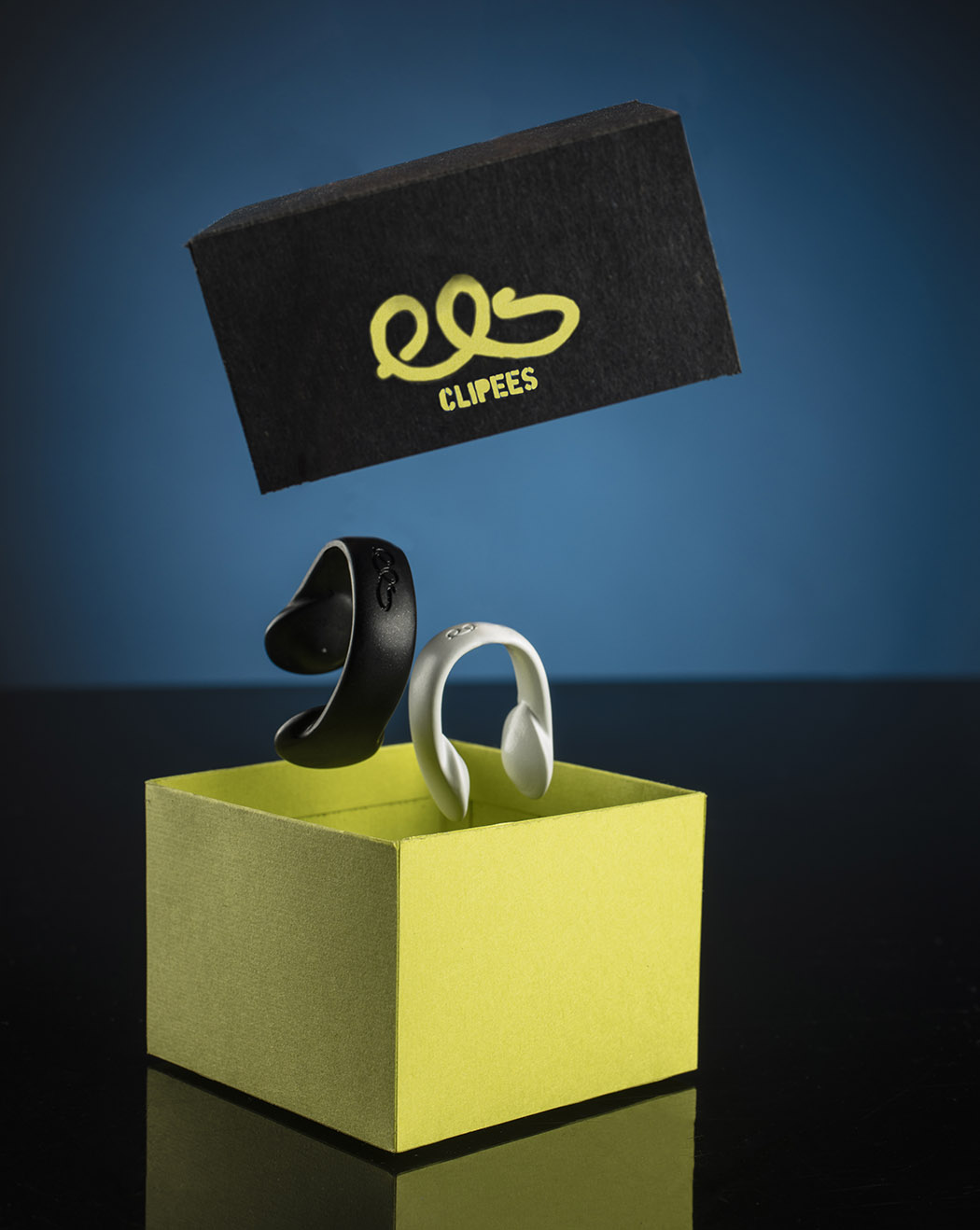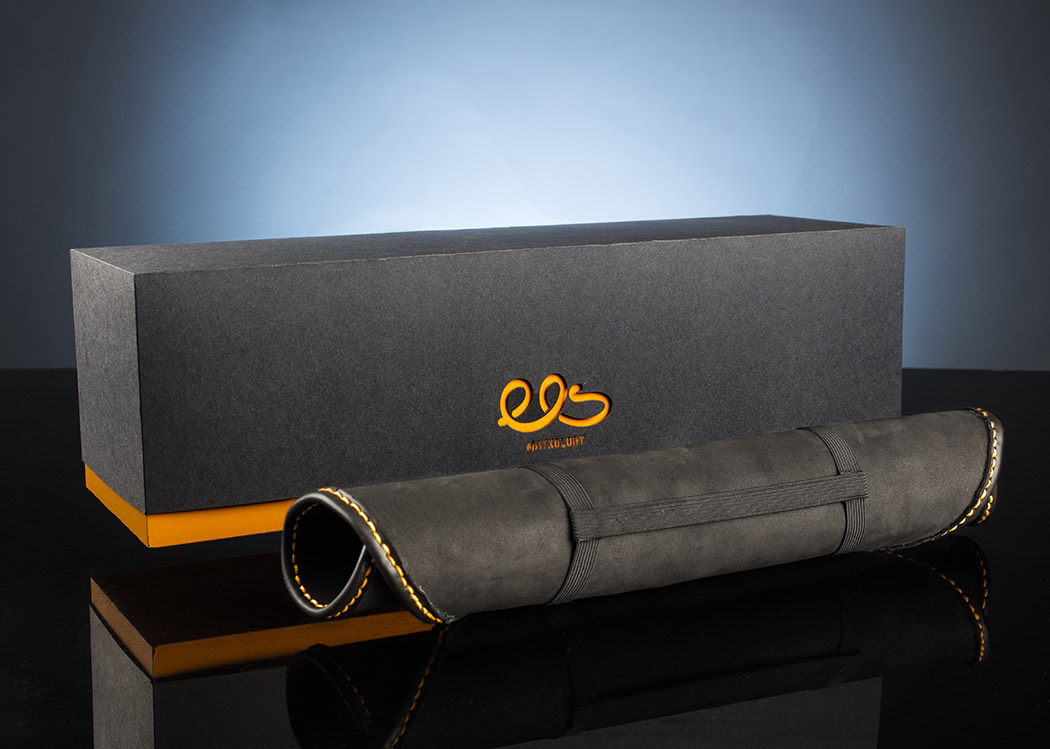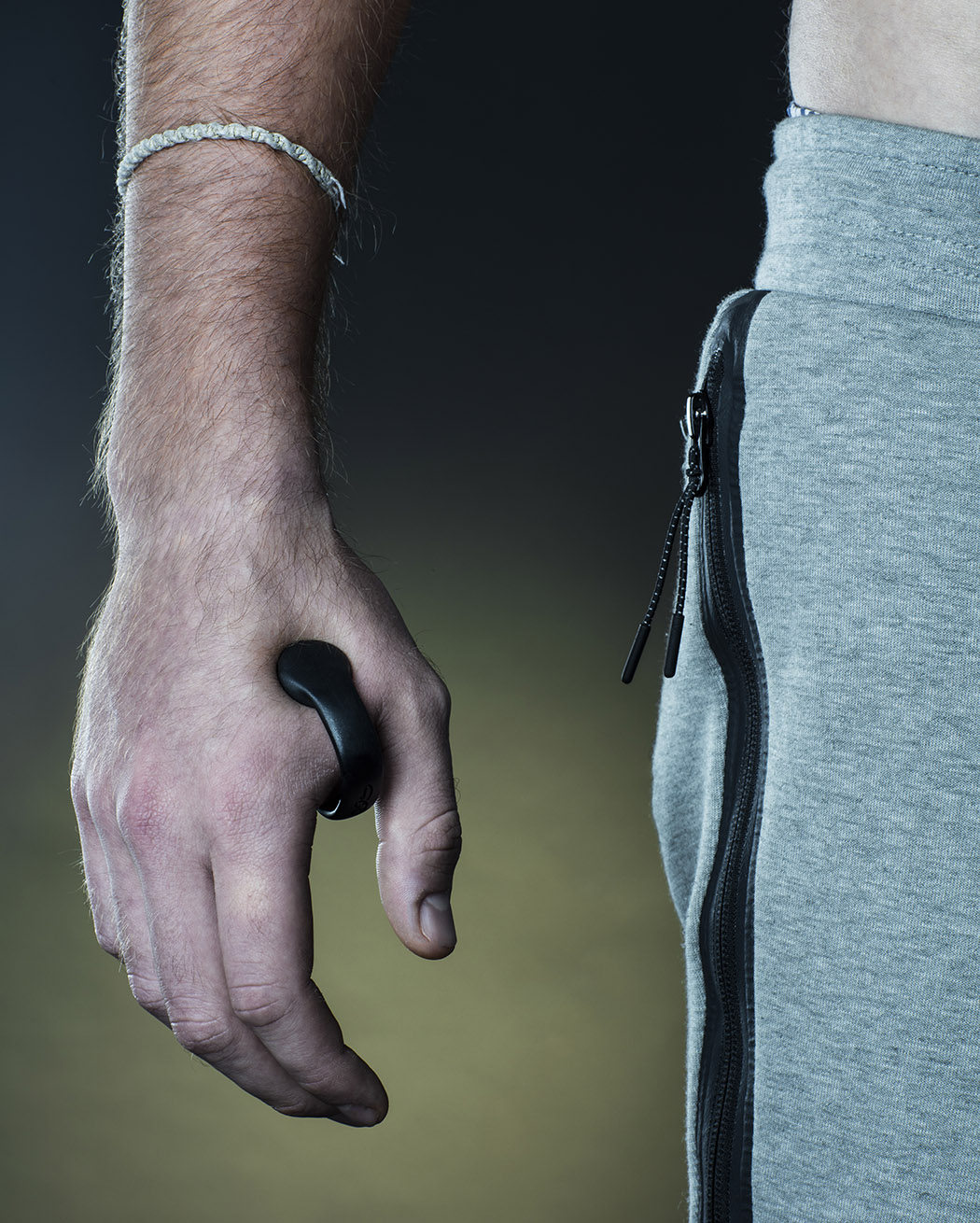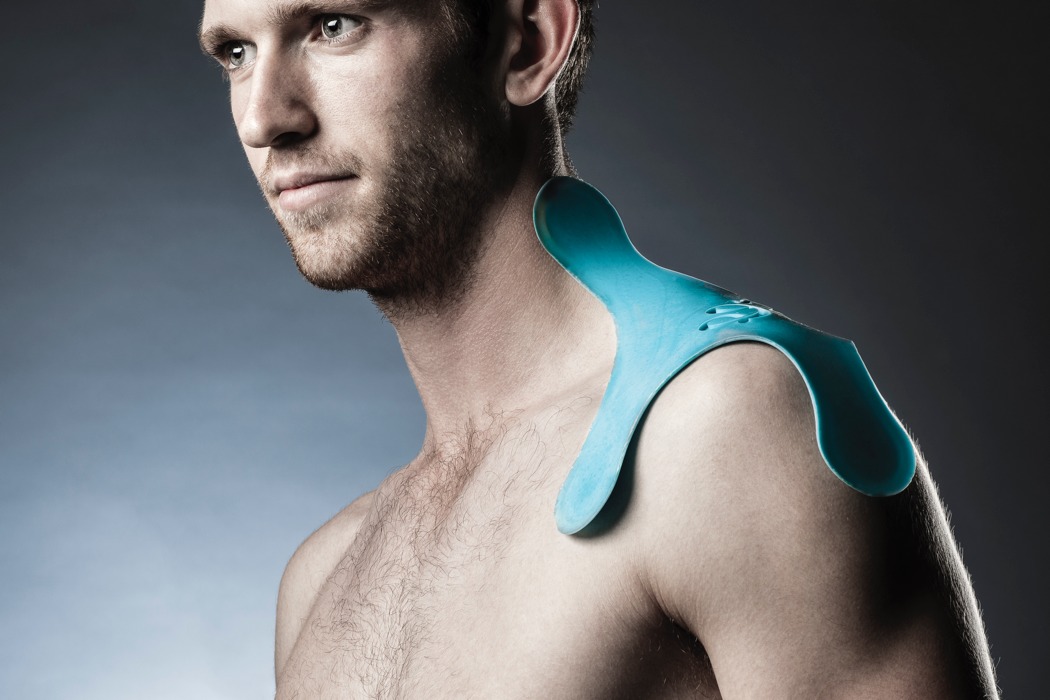
EES is a versatile line of wearable products focused on oriental healing techniques for athlete stress and pain relief. The collection consists of a flexible magnetic healing pad that can be placed around any limb or muscle, a massaging wrap for soothing aches, and pressure clips for restoring qi energy. Using time-tested methods such as acupressure, reflexology and acupuncture, they aim to help users lower tension and reduce negative pressure with targeted alleviation rather than pills and topical solutions. Available separately or as a group, they’re a great addition to your fitness recovery practices that you can toss in your gym bag and use just about anywhere.
Designers: Fabiana Valletta, Maria Franco & Valentin Haack
